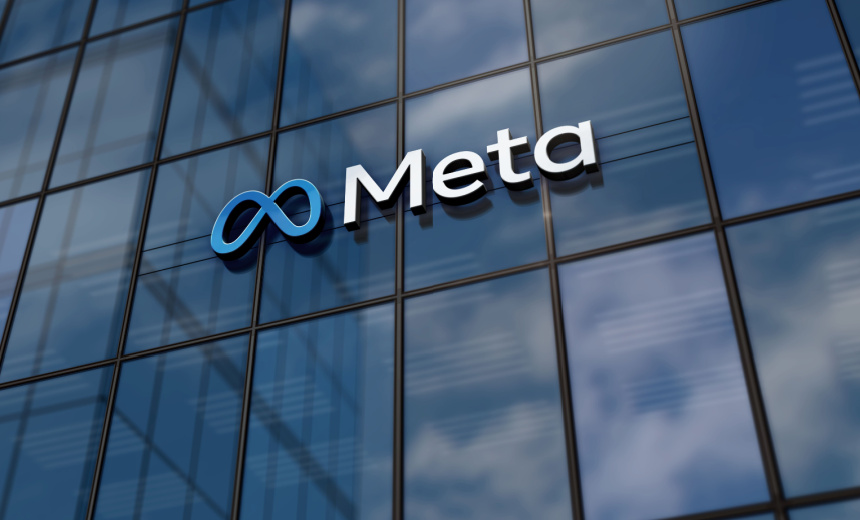Fraud Management & Cybercrime
,
Fraud Risk Management
,
Regulation
Only Regulations Can Convince Meta to Cut Its Revenue Stream From Fraud Victims

How motivated would you be to stop a source of revenue if you discovered that some of your advertisers are scamming your customers? Most businesses would want to protect their customers at all costs. In the strange universe of social media firm Meta, incentives for doing the right thing are totally different.
See Also: Thwarting Cyberthreats in the Power Sector
A report from Reuters found that 10% of Meta’s 2024 revenue came from ads for scams and banned goods. A cache of previously unreported documents reviewed by Reuters also shows that the social-media giant for at least three years failed to identify and stop an avalanche of ads that exposed billions of users of Facebook, Instagram and WhatsApp to fraudulent e-commerce and investment schemes, illegal online casinos and banned medical products.
In fact, Meta platforms hosted 15 billion scam ads every day that generated $7 billion in revenue every year. Meta’s internal documents also anticipate that regulatory fines for scam ads could reach up to $1 billion, but still much less than revenues it collects for the scam ads, according to Reuters.
Let’s be clear: Meta knows about the fraud happening on its platforms. But the company has decided not to do anything about it because bringing down the ads will hurt revenues, drag down the company’s profit margin and potentially affect its stock price. But all is not lost. Meta does take some action if an ad comes under high suspicion as being fraudulent or has a large number of registered complaints associated with it: Meta charges advertisers more money to run the ads as a disincentive to scammers. But it’s complete win-win for Meta.
None of these are new developments for Meta. For years, fraud investigators have decried Meta’s lackadaisical attitude toward online scams.
On multiple forums, practitioners from banks to fraud investigators have been demanding more responsible behavior by Meta – either voluntarily or through accepting liability for victims who are Meta’s members. JPMorgan Chase in a hearing last year reported that half of scams reported to the bank originate on social media sites. Meta accounted for nearly half of all reported scams on Zelle between 2023 and 2024. The United Kingdom’s Payment Systems Regulator said Meta’s products were involved in 54% of all payment-related scam losses in 2023.
Essentially, Meta is operating in a regulatory vacuum – at least in the United States – that allows the company to prioritize profits over user protections.
The company doesn’t enjoy such a free hand in United Kingdom, Australia or even Singapore. The company faces strict anti-scam regulations in several countries that have taken proactive legislative action.
For example, the U.K. Online Safety Act requires Meta to tackle illegal content including fraud, with the regulator empowered to impose fines up to 18 million pounds or 10% of global revenue. The European Union’s Digital Services Act pushes for greater accountability and transparency from platforms, requiring stronger identity verification of advertisers and swifter intervention on scams.
The Australian Competition and Consumer Commission sued Meta in 2022 for breaching Australian Consumer Law by publishing scam cryptocurrency advertisements on its platforms. Singapore implemented the Online Criminal Harms Act in February 2024 and issued its first enforcement order against Meta in September 2025, requiring implementation of anti-scam measures with fines of up to SG$1 million for non-compliance.
While U.S. lawmakers are yet to take any concrete steps to hold social media companies accountable for scams on their platforms, the U.S. government is taking some steps to curtail scams. The U.S. Attorney for the District of Columbia on Wednesday announced the launch of the Scam Center Strike Force to dismantle the criminal organizations operating in the region including Cambodia, Laos and Burma.
But dismantling scam centers abroad does little when Meta’s platforms continue to serve as the primary marketplace for these operations. It makes sense to go after these criminal groups, but in this case, social media platforms act as the conduit for scam campaigns that could come from anywhere in the world. Online fraud didn’t start in Southeast Asia, and dismantling the criminal networks there certainly won’t end it.
Cracking down on South Korea while giving Big Tech another pass is lot like treating a symptom while ignoring the fatal disease. Until the day U.S. regulators can muster up the regulatory fortitude of other countries, Meta’s cost-benefit analysis will always favor scam revenues over user safety – and billions of users will keep paying the price.
